Ireland's longest running arts and health organisation, the Waterford Healing Arts Trust (WHAT) celebrates 25 years with the premiere of a commissioned choral works, Hospital Voices, in the chapel at University Hospital Waterford (UHW) on Thursday, December 6th.
The performance by the Madrigallery Chamber Choir is the culmination of a six-month residence at the hospital by composer Eric Sweeney and poet Edward Denniston. This was the first time that the Waterford Healing Arts Trust brought artists from different disciplines together to work with patients and staff in the hospital.
“We set out to explore patients’ stored memories. Sometimes, patients with dementia can’t recognise a family member or remember their own names but they can sing a song or remember a poem from their childhood,” explains Sweeney.
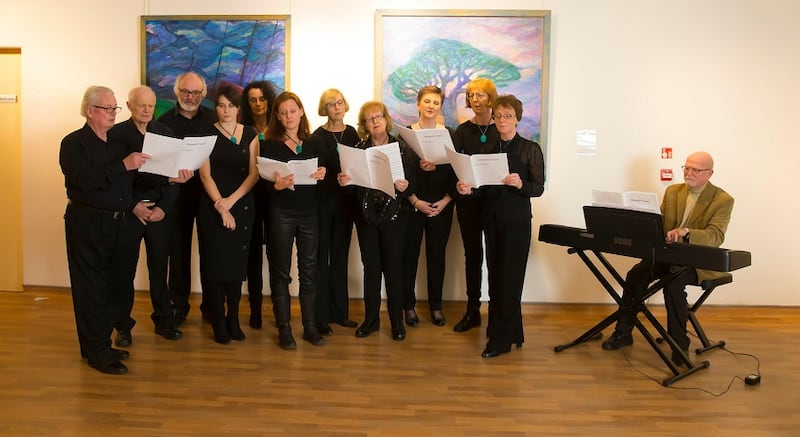
With the permission of staff and patients themselves, Sweeney and Denniston visited patients in medical and surgical wards of UHW and asked them if they would sing a song or recite a poem. “We were very clear that we weren’t art therapists but that we were using art in a positive way to enable patients to express what they had forgotten . . . It was a very humbling experience,” says Sweeney. Denniston wrote some poems inspired by the encounters which Sweeney then set to music for choir and piano.
Retired Church of Ireland rector, Henry Keogh (79) who was in the hospital during their residence, gave great inspiration to the final works. Not only, did he sing a song from his childhood that formed the basis of the piece, This is Grief but he also unearthed a piece of music that he composed himself over 40 years ago which will be performed for the first time as part of Hospital Voices.
Now back at home in Dungarvan, Henry Keogh says that the performance will make him feel immensely proud. "It's a wonderful way of celebrating the old coming back to the new and the new returning to the old," he says. His daughter, Karen Keogh adds that the encounters with Eric and Edward lifted his spirits and made him feel very special and important during his hospital stay.
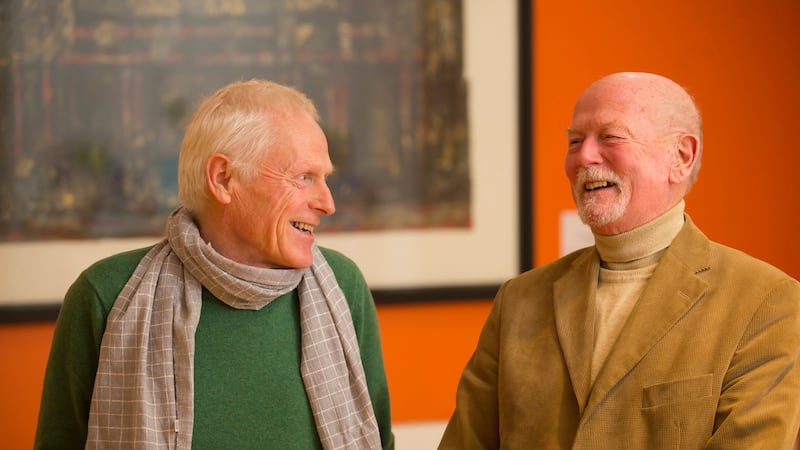
Denniston says that during the residency, he spent a lot of time in the hospital, soaking up the atmosphere as well as speaking to patients and staff. “You notice how complicated it all is and that getting people off trolleys won’t solve all the issues in a hospital. I did ask myself sometimes what use is our work? But then, I witnessed patients who were usually very quiet, brightening up by our chat.”
Denniston also read books including The Language of Kindness: A Nurse's Story by Christie Watson and The Way We Die Now by Cork surgeon, Seamus O'Mahony and Do No Harm by brain surgeon, Henry Marsh during his residency. "Watson talks about the things nurses do which can have an extraordinary effect – the quiet word, the hand reaching out to steady someone. These are the things we take for granted but which can be enormously helpful. And O'Mahony talks about how these unmeasurable [aspects of care] need to run in parallel to the medical procedures in hospitals."
Denniston and Sweeney have included “sound pictures” from the hospital – the lift going up, excerpt from patients’ singing, staff and volunteer’s commenting on their work as interludes between the choral pieces for Hospital Voices.
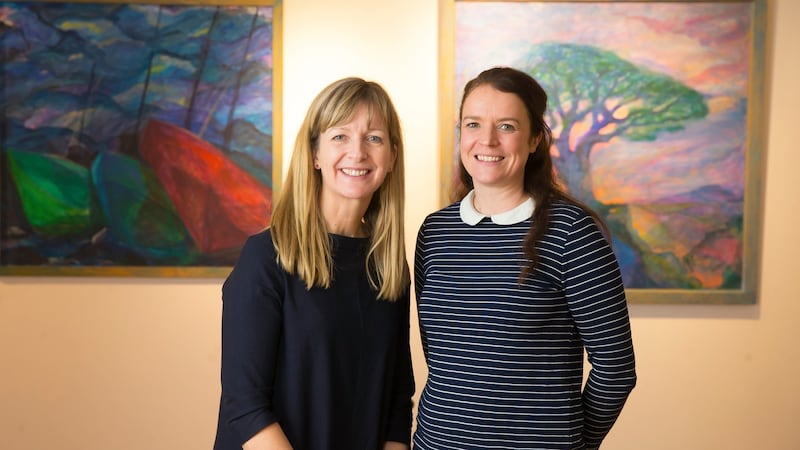
Clinical Nurse Manager, Lucia Brennan was in charge of the surgical wards while Denniston and Sweeney were artists in residence. "I wondered how it would work on such a busy ward but we barely noticed they were there. We picked suitable patients for them to speak with – long stay patients or those who would love the chat. One very quiet lady lit up when she started talking about her past and sang a song that her mother used to sing to her. Eric knew the song so she talked more vividly. It was lovely for the staff to see patients coming out of themselves. Sometimes, illness closes people down and they don't want to talk to anyone but this helped them open up and forget about their troubles."
The Waterford Healing Arts Trust at UHW is housed in one of the original sanatorium buildings constructed for patients with tuberculosis in the 1950s. An impressively bright and spacious building, it includes an artist’s studio, a workshop/performance studio, an arts & health library and an exhibition space. Workshops for staff and patients are held in the building and art pieces are brought to patients on the dementia wards as part of the Open Gallery initiative. A healing garden in the grounds of the hospital offers patients, staff and visitors a quiet space away from the bustle of the hospital.
The trust was initiated by now retired Waterford GP Dr Abdul Bulbulia who believed that bringing visual arts and sculpture into hospitals was good for staff, visitors and most importantly for patients. "Healing was used in the title in the sense that the arts and patients engaging with their own creativity can be spiritually uplifting when you are feeling unwell," says Maeve Butler from the Waterford Healing Arts Trust.
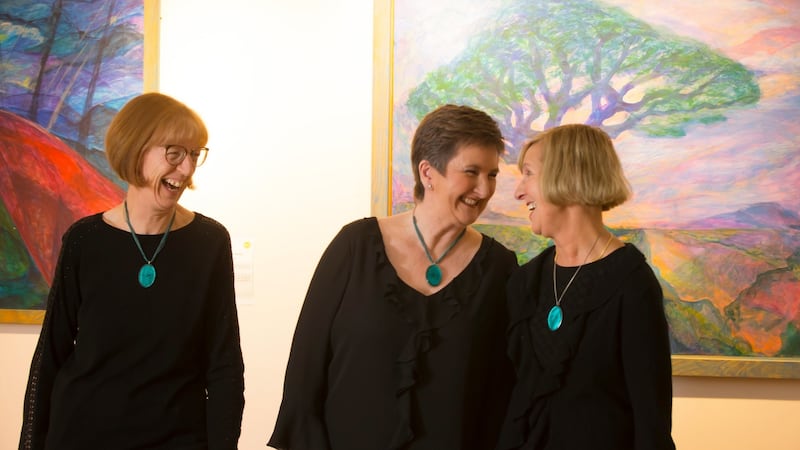
Since it started 25 years ago, exhibitions of paintings by staff and patients – as well as sculptures, tapestries and paintings from the WHAT's extensive art collection – grace the hospital corridors and artists-in-residence regularly work directly with patients. The trust relies on funding from the Arts Council, the HSE, part-time staff employed on Community Employment schemes and other funds for specific projects.
In the summer of 2019, the Dunmore Wing with a new palliative care unit, and three floors of medical and surgical wards is due to open at University Hospital Waterford. How art works can bring life to the corridors of this new space and what patient/artist interactions emerge will be the new creative challenges for the Waterford Healing Arts Trust.
25 Objects
The Waterford Healing Arts Trust celebrates 25 years with an exhibition of 25 objects that represent the artist residences, public art commissions, art workshops and music programmes with patients, staff and visitors to University Hospital Waterford.
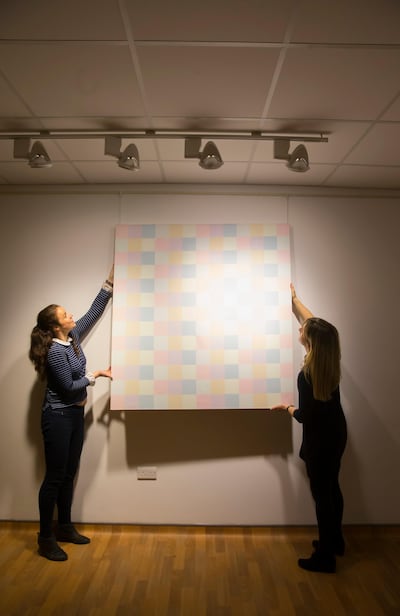
These 25 objects – books, art works, sound files, videos, photographs – will go on display in the main hospital corridor and the outpatients' corridor from December 6th. They include paintings from the "Staff Art Wall", the Art Kart converted medical trolley which brings art materials to the paediatric and renal dialysis units and Menu of Poems, a short anthology of poems distributed on meal trays on All Ireland Poetry Day.
"These 25 objects tell the story of what we do and why. All of our work is about softening the clinical environment and alleviating stress and anxiety for patients, family members and staff through the arts," says Claire Meaney, acting Arts Director of the Waterford Healing Arts Trust.
Meanwhile, sculptor Janet Mullarney’s two wooden figures sit astride a table in the front foyer of the hospital close to the striking stone and metal sculptural pieces of Irish sculptor, Remco de Fouw which were the first public art work commissioned for Waterford Regional Hospital in 1991.










